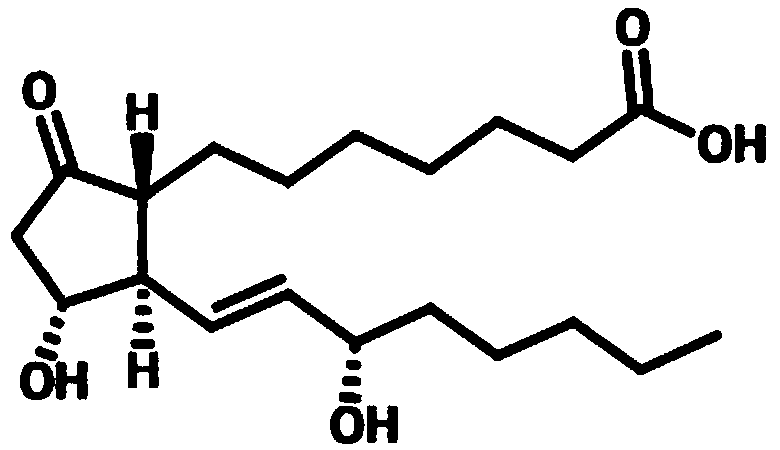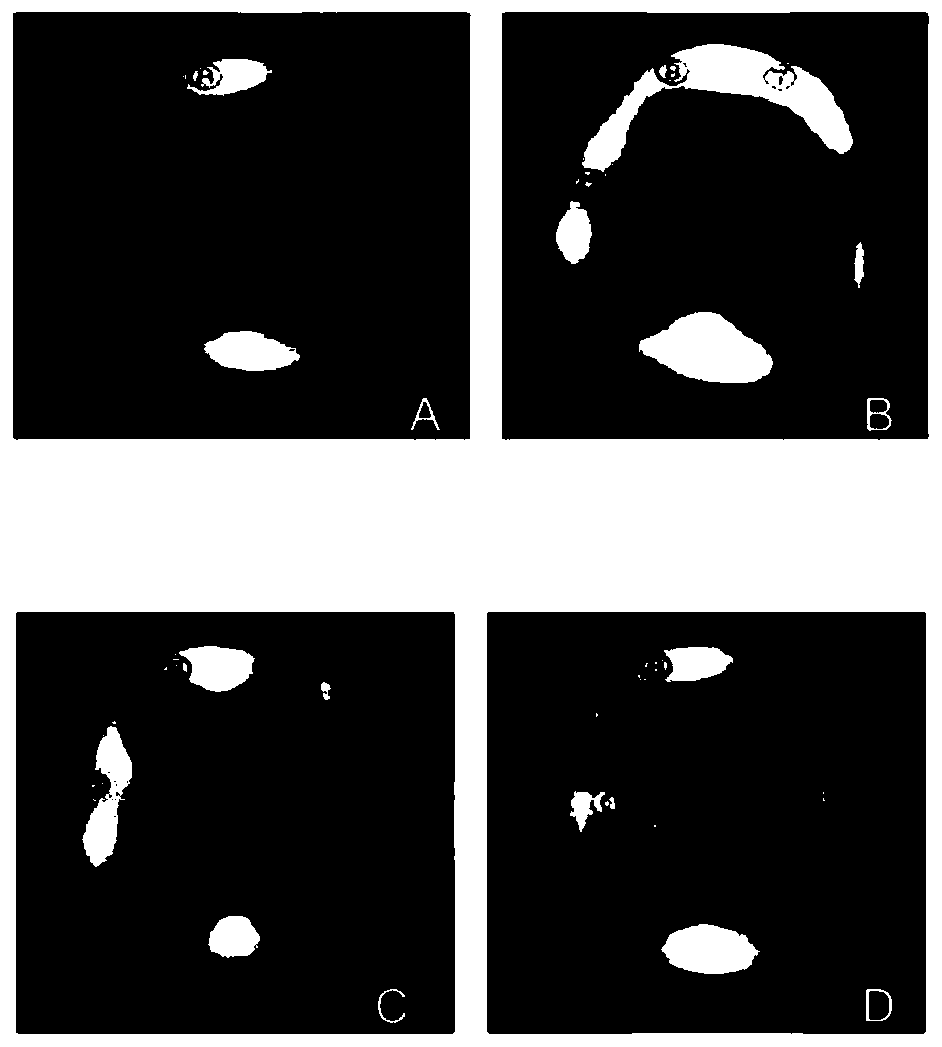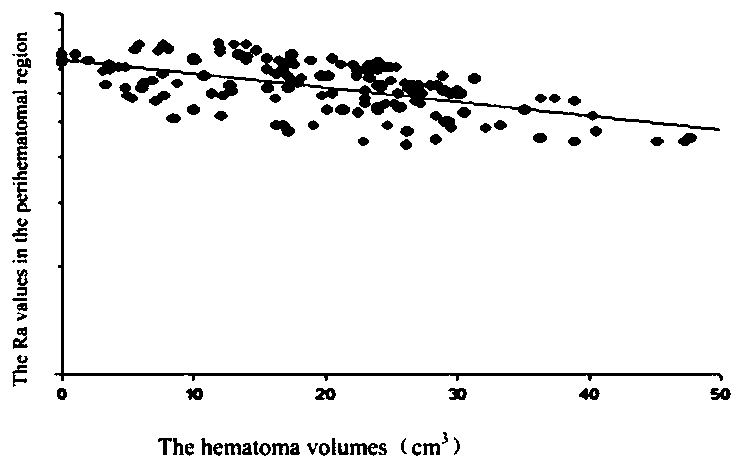Application of prostaglandin E1 in preparing medicines for treating cerebral hemorrhage
A prostaglandin and drug technology, applied in the field of biomedicine, can solve the problems of no reports, etc., and achieve the effect of reducing the reduction of cell viability, the activation inhibition of microglia cells, and the inhibition of oxidative stress response
- Summary
- Abstract
- Description
- Claims
- Application Information
AI Technical Summary
Problems solved by technology
Method used
Image
Examples
Embodiment 1
[0041] Application of PGE1 in the treatment of patients with cerebral hemorrhage
[0042] 1. Patients: Between November 2007 and January 2009, 40 patients with hypertensive cerebral hemorrhage were admitted to the Department of Neurology, Affiliated Hospital of Nantong University.
[0043] 2. Inclusion and exclusion criteria: Carry out this embodiment according to the diagnostic criteria formulated by the 1995 National Academic Conference on Cerebrovascular Diseases. CT examination showed that the amount of hemorrhage in the basal ganglia was 10-30ml. The patient is onset for the first time, without any history of chronic liver disease or bleeding disorder, and the platelet measurement is greater than 100×10 9 / L, and the coagulation function was normal. Patients with previous history of intraventricular hemorrhage, subarachnoid hemorrhage and cerebral hemorrhage caused by systemic diseases, as well as severe heart, liver and kidney system dysfunction must be excluded from p...
Embodiment 2
[0074] Application of PGE1 in the treatment of cerebral hemorrhage in mice
[0075] 1. Animals: male C57BL / 6 mice, SPF grade, 26-30g, purchased from the Experimental Animal Center of Nantong University, and normally kept in a clean animal room.
[0076] 2. Experimental grouping: mice were randomly divided into sham operation+NaCl group, ICH group+NaCl group, ICH+PGE1 (2 μg / kg) group, ICH+PGE1 (10 μg / kg), ICH+PGE1 (20 μg / kg), total 5 groups, 30 rats in each group.
[0077] 3. Drug treatment: All mice were intraperitoneally administered (normal saline or PGE1) four times at 0h, 4h, 12h and 24h after operation; all mice received nearly equal liquid injection volume, about 0.5-0.6ml.
[0078] 4. Experimental method: Injecting autologous blood into the brain is a common animal modeling method for cerebral hemorrhage, and this embodiment is used for the therapeutic effect of PGE1 on cerebral hemorrhage. The mouse ICH model was prepared by injecting autologous blood into the brain,...
Embodiment 3
[0104] In this example, for the protection of nerve cells and the inhibition of oxidative stress, heme was used to induce damage to primary cortical neurons to construct an in vitro model of cerebral hemorrhage.
[0105] Construction of heme-induced neuronal apoptosis model (in vitro ICH model): culture mouse cortex neuron cells at embryonic day 15, stimulate with different concentrations of hemin (Normal, DMSO, 1, 10, 50, 100 μM), and select the best stimulating concentration. The result is as Figure 13 As shown, the results of CCK-8 showed that as the hemin concentration increased, the cell viability gradually decreased (1μM hemin cell viability was 0.93±0.19, 10μM hemin cell viability was 0.63±0.15, 50μM hemin cell viability was 0.45±0.09, 100μM hemin cell viability is 0.25±0.04). 50 μM hemin was chosen to stimulate the primary cortical neurons, and the cell viability at different time points was detected. After 18 hours of hemin stimulation, the cell viability was 0.67±...
PUM
 Login to View More
Login to View More Abstract
Description
Claims
Application Information
 Login to View More
Login to View More - R&D
- Intellectual Property
- Life Sciences
- Materials
- Tech Scout
- Unparalleled Data Quality
- Higher Quality Content
- 60% Fewer Hallucinations
Browse by: Latest US Patents, China's latest patents, Technical Efficacy Thesaurus, Application Domain, Technology Topic, Popular Technical Reports.
© 2025 PatSnap. All rights reserved.Legal|Privacy policy|Modern Slavery Act Transparency Statement|Sitemap|About US| Contact US: help@patsnap.com



